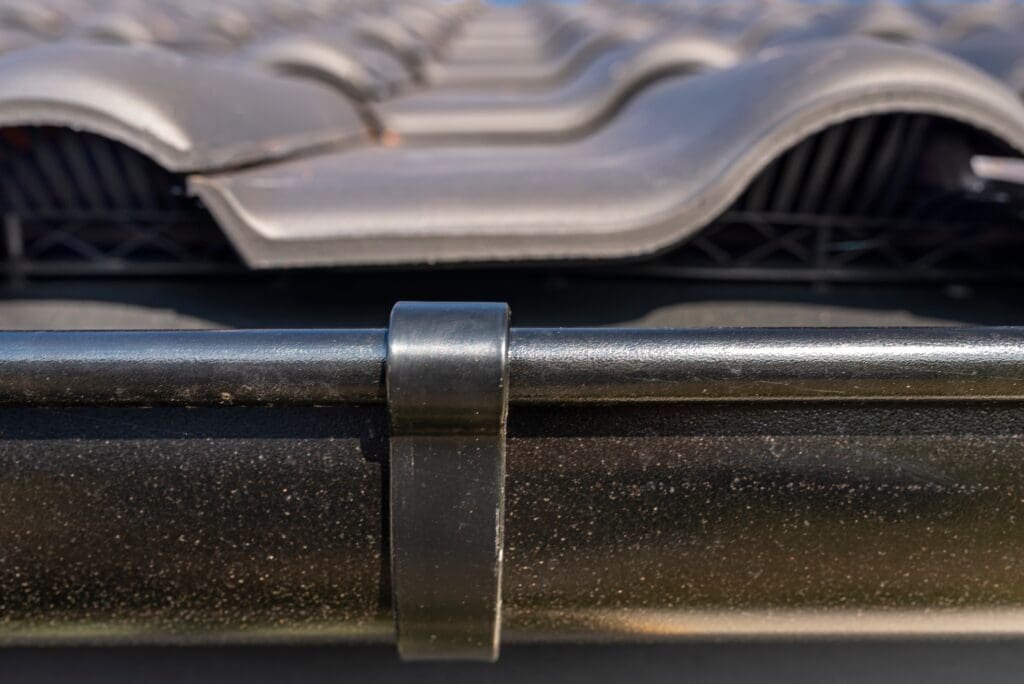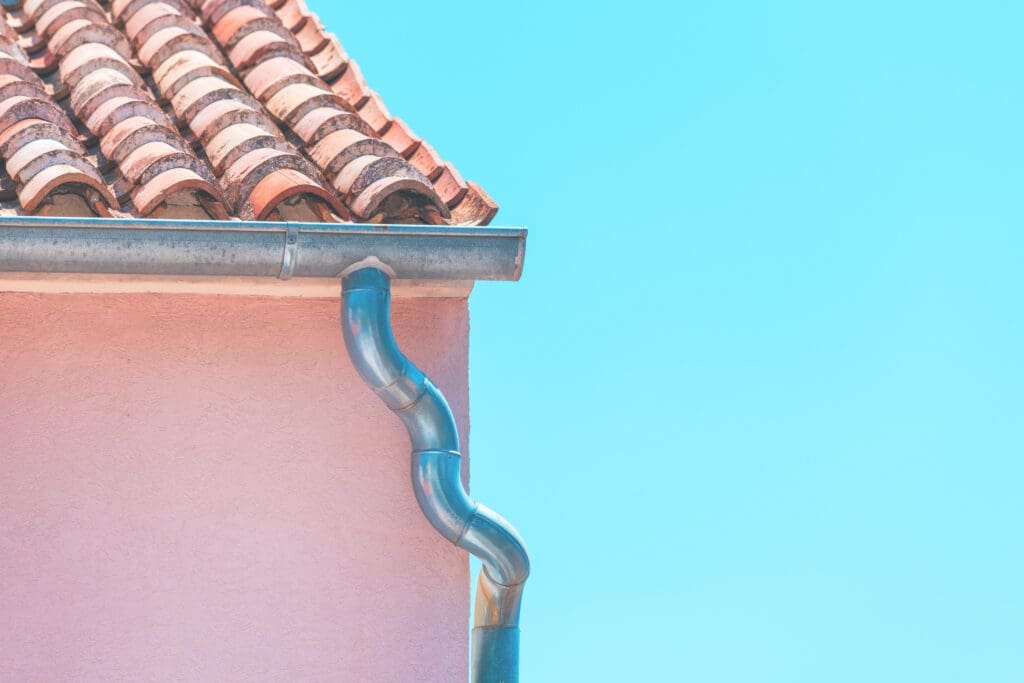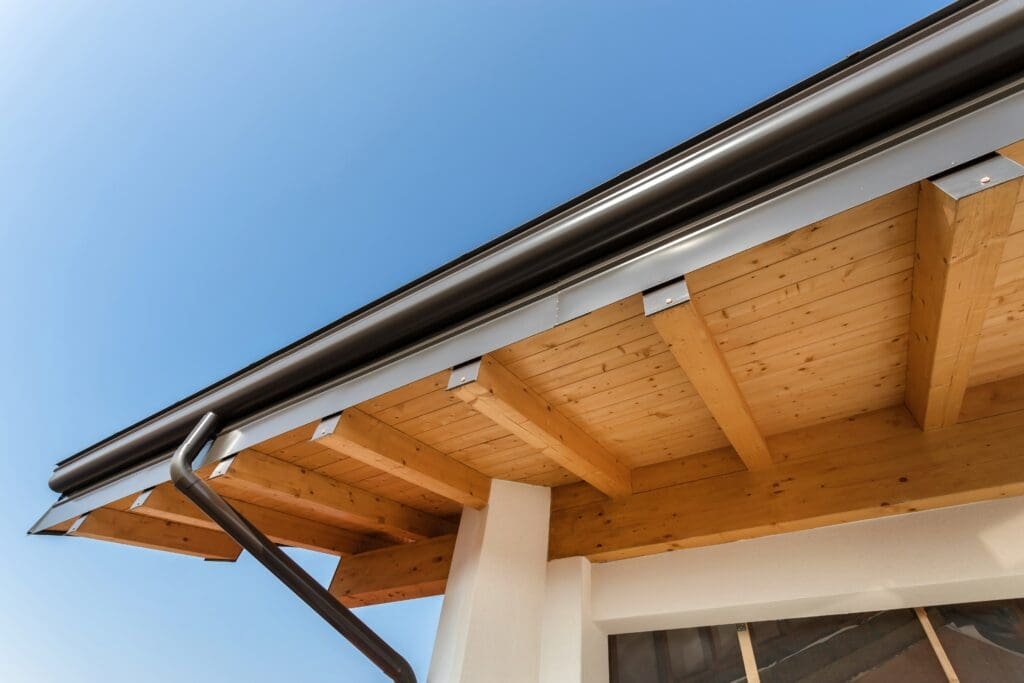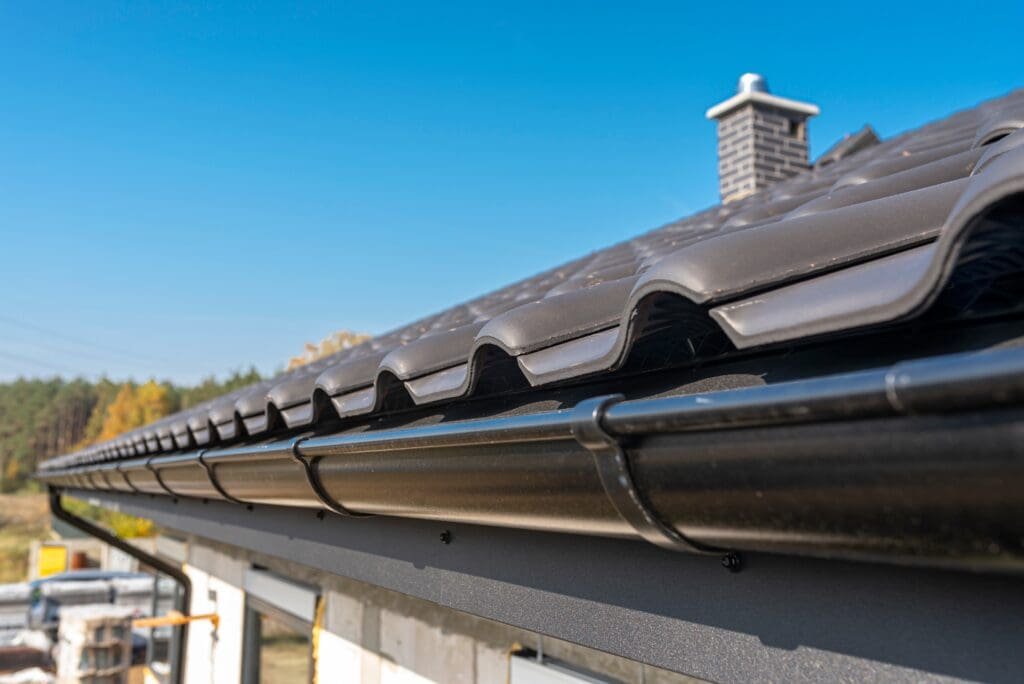Gutters play a crucial role in maintaining the integrity of a home by directing rainwater away from the foundation. However, they are prone to clogging, which can lead to serious problems such as water damage and foundation issues. This is where gutter guards come in. In this comprehensive guide, we will explore the pros and cons of gutter guards to help you make an informed decision for your home.
Understanding Gutter Guards
What are Gutter Guards?
Gutter guards are protective coverings that are installed over the open tops of gutters. Their primary function is to prevent debris, such as leaves, twigs, and insects, from entering the gutter system while allowing water to flow freely. They act as a barrier, reducing the need for frequent gutter cleaning.
By preventing debris from clogging the gutters, gutter guards help maintain the efficiency of the gutter system. This can prolong the lifespan of the gutters and prevent water damage to the roof, walls, and foundation of the house. Additionally, gutter guards can also help prevent pests, such as birds and rodents, from nesting in the gutters.
Different Types of Gutter Guards
There are several types of gutter guards available in the market, each with its own unique features and benefits. Some popular options include:
- Screen Guards: These guards consist of metal or plastic screens with small holes that allow water to pass through while filtering out debris.
- Mesh Guards: Mesh guards are similar to screen guards but have a finer mesh that provides enhanced protection against small debris.
- Bottle Brush Guards: These guards are made of bristles that allow water to flow through while catching larger debris on the surface.
- Reverse Curve Guards: These guards use a curved design to redirect water into the gutter while keeping debris out.
Each type of gutter guard has its own set of advantages and considerations. For example, while screen guards are effective at keeping out larger debris, they may require more frequent cleaning to prevent clogging. On the other hand, mesh guards provide better protection against smaller particles but may be more prone to clogging in heavy rainfall. Understanding the specific needs of your home and environment can help you choose the right gutter guard for optimal performance.
The Advantages of Gutter Guards

Preventing Clogs and Blockages
One of the primary advantages of gutter guards is their ability to prevent clogs and blockages. By keeping debris out of the gutters, they ensure a smooth flow of water, reducing the risk of water damage to your home’s foundation, walls, and landscaping.
Furthermore, gutter guards can also help prevent pest infestations. Clogged gutters filled with leaves and standing water can become a breeding ground for mosquitoes, termites, and other unwanted insects. By installing gutter guards, you create a barrier that deters pests from making your gutters their home.
Reducing Maintenance Efforts
Gutter cleaning is a task that homeowners often dread. Gutter guards minimize the need for frequent cleaning by significantly reducing the amount of debris that accumulates in the gutters. This not only saves time, but also eliminates the safety risk associated with climbing ladders to clean gutters.
In addition to reducing the frequency of gutter cleaning, gutter guards can also extend the lifespan of your gutters. When gutters are constantly clogged with leaves, twigs, and other debris, they are more prone to rust and corrosion. Gutter guards help protect your gutters from these damaging elements, ensuring they last longer and function properly.
Enhancing Home Safety
Gutter guards provide an added layer of protection for your home. By preventing clogs and blockages, they help prevent water overflow, which can lead to slippery walkways, mold growth, and damage to the structure of your home.
Moreover, gutter guards can improve the overall curb appeal of your home. With gutter guards in place, you can maintain clean and clear gutters that enhance the aesthetic appeal of your property. Say goodbye to unsightly debris-filled gutters that detract from the beauty of your home’s exterior.
The Disadvantages of Gutter Guards

Installation Challenges
While gutter guards offer numerous benefits, their installation can sometimes be challenging. Proper installation is crucial for optimal performance, and it often requires professional expertise. Additionally, some gutter guard systems may not be compatible with certain types of gutters, requiring modifications or replacements.
When installing gutter guards, it’s essential to consider the slope and pitch of the roof to ensure proper water flow. In some cases, the complexity of the roof structure can make installation more time-consuming and labor-intensive. Factors such as the presence of skylights, chimneys, or intricate rooflines can add to the installation challenges, requiring custom solutions for effective gutter guard placement.
Potential for Ice Dams
In colder climates, gutter guards may contribute to the formation of ice dams. Ice dams occur when snow melts on the roof but refreezes near the gutters, causing water to back up and potentially damage the roof and walls. Investing in gutter guards with built-in ice dam prevention features can help mitigate this issue.
Ice dams can pose a significant risk to the structural integrity of a building, leading to water infiltration and potential mold growth. To prevent ice dams when using gutter guards, proper insulation and ventilation in the attic are crucial. Adequate attic insulation helps maintain a consistent roof temperature, reducing the likelihood of snow melting and refreezing at the eaves.
Limitations and Effectiveness
While gutter guards are designed to keep out debris, some small particles may still find their way into the gutter system. In extreme weather conditions, such as heavy rainfall or strong winds, the effectiveness of gutter guards may be compromised. Regular maintenance and occasional inspections are still recommended to ensure their proper functioning.
In areas with high pollen or seed counts, fine particles can accumulate on the gutter guards over time, potentially clogging the system. Periodic cleaning or rinsing of the gutter guards may be necessary to maintain optimal performance. Additionally, the type of gutter guard chosen can impact its effectiveness; some designs may be more prone to clogging than others, depending on the local environment and surrounding vegetation.
Cost Analysis of Gutter Guards

When considering the cost of gutter guards, it’s essential to factor in not just the initial investment but also the long-term benefits they provide. The initial cost of gutter guards can vary based on factors such as the type, material, and size of your gutters. Typically, gutter guards can range from $2 to $10 per linear foot. While this upfront expense may give some homeowners pause, it’s crucial to view gutter guards as a valuable investment that can pay off in the long run.
Moreover, the installation of gutter guards can also enhance the overall aesthetic appeal of your home. With various styles and materials available, gutter guards can complement the architecture of your house while effectively protecting your gutters from debris buildup. This added curb appeal can increase the value of your property and contribute to a more polished exterior appearance.
Initial Investment
The cost of gutter guards varies depending on the type, material, and size of your gutters. On average, gutter guards can cost anywhere from $2 to $10 per linear foot. While this may seem expensive, considering the long-term benefits and reduced maintenance costs, gutter guards are often seen as a worthwhile investment.
Long-term Maintenance Costs
By reducing the need for frequent gutter cleaning, gutter guards can save you money on maintenance in the long run. However, it is important to note that gutter guards may require occasional cleaning and maintenance themselves to ensure their effectiveness. On average, these costs are minimal compared to the time and money spent on regular gutter cleaning without guards.
Making the Decision: Are Gutter Guards Right for You?

Assessing Your Home’s Needs
Before deciding to invest in gutter guards, consider the specific needs of your home. Factors such as the prevalence of trees in your area, the type of debris that commonly accumulates in your gutters, and the frequency of gutter cleaning required should all be taken into account. Consulting with a professional can help you determine if gutter guards are necessary for your home.
Additionally, it’s important to assess the climate of your region when considering gutter guards. Homes in areas with heavy rainfall or snowfall may benefit greatly from gutter guards, as they can help prevent water damage and ice dams during the winter months. On the other hand, homes in drier climates with minimal debris may find gutter guards less essential.
Considering Your Budget
Gutter guards come in a range of prices, allowing you to choose an option that fits your budget. While they may require an initial investment, keep in mind the long-term cost savings they offer by reducing the frequency of gutter cleaning and minimizing potential water damage to your home.
Moreover, when evaluating the budget for gutter guards, factor in the potential savings on maintenance costs over time. By reducing the need for professional gutter cleaning or repairs due to clogs and blockages, gutter guards can provide a cost-effective solution for homeowners looking to protect their property.
Weighing the Pros and Cons
Ultimately, the decision to install gutter guards should be based on a thorough consideration of their benefits and drawbacks. Take into account the advantages of preventing clogs and blockages, reducing maintenance efforts, and enhancing home safety, alongside the disadvantages of installation challenges, potential ice dams, and limitations in effectiveness. By carefully evaluating these factors, you can make an informed decision that best suits your home and lifestyle.
Furthermore, consider the environmental impact of gutter guards. Some models are designed to be eco-friendly, promoting water conservation and reducing debris buildup in gutters, which can benefit local ecosystems. However, it’s essential to research and choose gutter guards that align with your sustainability goals and values.





